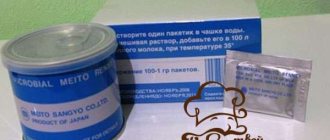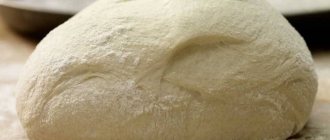In this article I give advice on how to keep cheese fresh and mold-free in the refrigerator for longer.
There will also be many life hacks on how to properly store such a product in the freezer and when traveling.
Be sure to consider the storage features and expiration dates for various types of cheeses.
This is a very important topic!
After all, any type of cheese, if stored improperly, becomes covered with a white coating and loses its taste properties.
As a result, a tasty, healthy and expensive product turns into something inedible.
To avoid this, you need to take into account all storage recommendations. Let's look at them below.
Universal rules for storing cheese
- Cheeses do not like heat, but extreme cold can be detrimental to them. This finicky product should be kept in a cool, damp place. The most suitable option is a refrigerator.
- The temperature in the refrigerator compartment should be between 0 and 6 °C.
- Humidity also matters. It should not be lower than 85–90%, otherwise the cheese will dry out quickly. If the moisture level is too high, the surface of the cheese will become slippery or moldy. Remember that mold is not always noble!
- If you left the cheese in a too humid place for a long time, place a sugar cube next to it, it will absorb excess moisture.
- Choosing a location. It is better to store cheese in the refrigerator in the compartment for vegetables and fruits. Placing cheese on the door is not the best solution: temperature changes are undesirable for the product.
- Baking parchment or foil will help protect the cheese from air and drying out. The edges of the paper must be tightly secured with tape to prevent direct exposure to oxygen.
- A piece of cheese wrapped in paper should be placed in a glass container with an airtight lid. Food containers made of high-quality food-grade plastic are also suitable.
- Placing cheese in the refrigerator among everyday products also needs to be done correctly: you should absolutely not store poorly packed cheese next to raw eggs and foods with a strong smell (opened cans, pickles, sauces).
- Different types of cheese also need to be placed separately from each other, otherwise their flavors will mix.
What to do if Parmesan has gone bad
If the cheese has spoiled a little, mold or a white coating has appeared on the surface, then it’s okay. Simply cut or scrape this area off the surface of the cheese with a knife.
Cheese that has been exposed to air may begin to turn white or its “rind” may begin to thicken. If this is what happened to your Parmesan, there is a simple trick you can use to revive the cheese and make it ready for your next recipe.
Soak the cheesecloth in water, then wring it out until it is just damp. Wrap the cheese in a damp cloth, then in plastic wrap. Place it in the refrigerator overnight. The next day, when you remove the cloth, the cheese will be fresh and ready to eat again. Wrap it in new plastic wrap and put it in the refrigerator.
More about Italian Parmesan cheese - history, production, varieties and types
How useful is the publication?
Click on a star to rate!
Average rating 4.9 / 5. Number of ratings: 35
No ratings yet. Be the first to rate.
How to store cheese in a sealed package
Factory packaging helps the cheese preserve its properties and taste longer; it prevents the penetration of air and moisture. It is easy to find out the expiration date of an unopened product - all the information is indicated by the manufacturer on the label. It is quite easy to store closed packages of cheese: you do not need to follow food neighborhood rules. The main thing is not to break the seal. If you bought your favorite type of cheese in a store in triangle-shaped portions, then pay attention to whether it has a sticker on it with the packaging time and expiration date. At home, transparent cling film should be replaced with parchment.
Reliable Miele refrigerators
Refrigerators of the German brand are the latest household appliances for storing food. All functions and features of the units are aimed at keeping products perfectly fresh, storing and freezing them in optimal conditions, and helping to lead a healthy lifestyle.
The Miele range includes built-in and free-standing refrigerators. All units are equipped with advanced No Frost technology, which prevents the formation of ice on products or walls. Depending on the model, Miele refrigerators have a dynamic cooling system DynaCool, powerful cooling of the refrigerator and freezer compartments with two independent compressors. Optimal storage conditions for food are ensured by the innovative MasterFresh function in many models. Convenient device control, economical LED lighting, height-adjustable shelves, and reliable MaxLoad door hinges ensure comfortable and safe operation of the refrigerator.
How to store cheese if the package has already been opened
Keeping cheese in the refrigerator in an open package will take much less time. Hard cheeses retain their quality for 10–15 days, semi-hard cheeses for 1–2 weeks. Cheese cut into large chunks will last longer than thin slices. Varieties with mold will last in the refrigerator without losing their properties for no more than 3-4 days after opening the package. Homemade cheese also cannot boast of a long shelf life: it lasts no more than 2-3 days. Sometimes a cheesecake comes to the aid of housewives. Its glass dome protects the open cheese from external influences. By the way, sliced cheese, served to the table in an elegant cheese bowl, looks very solemn.
Tip: to please your guests with delicious hard cheese during a feast, remove it from the refrigerator 1 hour before serving. The aroma will reveal itself better, and the structure will become more delicate.
Features of Parmesan
The original Parmesan is produced only in Northern Italy. This is all because the legislation of the European Union enshrines an act that explains that Parmesan can only be cheese that is produced in specific cities of Northern Italy.
Parmesan is prepared according to an old recipe from cow's milk. This cheese is hard and brittle; after breaking Parmesan, crumbs are formed; the cheese also has a delicate taste and aftertaste. Parmesan is very rich in vitamins and beneficial microelements, but despite its usefulness, it is very high in calories.
Features of storing different types of cheese
- Hard varieties (maasdam, parmesan, cheddar) need a temperature of 5–8 °C and a humidity of 85%. In such conditions, large pieces of cheese can retain their quality for up to 2-3 months, but as soon as you cut off a piece, the shelf life will automatically be reduced to about 2 weeks. Hard cheeses dry out quickly when exposed to air - a white coating appears on the surface. The problem is easy to solve: just cut off the top dried layer. The minimum storage temperature is −4 °C.
- The storage temperature of soft cheeses (ricotta, mascarpone, mozzarella) is 4–5 °C, humidity is from 90%. If these cheeses are not provided with a comfortable environment, mold may appear on their surface. If this happens, the product will have to be thrown away. Simply cutting off the affected area is not enough: pathogenic microorganisms spread very quickly in the soft structure.
- Brine cheeses (Suluguni, feta, Ossetian) require special conditions. These varieties are able to retain their taste for up to 1–2 months, provided that the storage temperature is not higher than 8 °C, and the cheese itself is placed in a glass or enamel container with a salty solution. If a cloudy film appears on the surface of the liquid, the solution will need to be replaced with a new one. With this storage method and an excess of salt, the product may change its taste. The problem is easily solved: you need to soak the cheese in milk and keep it in it for 8–10 hours: the excess salt will go away.
- Goat and sheep cheeses are the most short-lived. They are recommended to be stored in the refrigerator for no longer than 3 days. Be sure to carefully package these flavorful cheeses and do not store them next to butter or pâtés.
- Blue cheese should be kept in cling film. It can also be replaced with an airtight container. This is necessary so that the specific smell does not spread to other products. It is strictly not recommended to expose cheeses with noble white, blue and other types of mold to direct sunlight. After slicing this cheese, wash your knife thoroughly. If particles of cheese fall on another product during further cutting, it will become “infected” and will soon spoil.
- Adyghe cheese also requires a separate glass container with a salty solution. The shelf life of this fermented milk product reaches 30 days.
- Processed cheeses are sold in convenient plastic tubs. Close the lid tightly, and then the cheese will not spoil for 5-6 days.
Important! To prevent cheese from suffocating in too tight packaging, try to select containers that are approximately 2-3 times larger than the size of the piece itself.
How to choose
Experts in matters related to this type of product believe that cheese with white or red mold on the surface is better suited for first-time consumption. Such mold, if necessary, can be cut off along with the crust as a last resort. The green-blue fungus is located inside the cheese mass and can cause unwanted feelings, so it is better to prepare in advance for consuming these types of cheeses.
In our country there is not yet a culture of using this product, and its quality is often far from what it should be. Therefore, when purchasing, you need to study all the data about the product, its manufacturer, and pay attention to the following things:
- products with white mold should smell like penicillin;
- when using blue mold, sections of it should be clearly visible on sections, but the places through which it was introduced inside should not be visible;
- the consistency of the cheese should be soft, but it should not fall apart;
- a quality product contains nothing but milk, salt, bacteria and enzymes. No other additives should be present in it.
Is it possible to store cheese outside of the refrigerator?
Leaving cheese at room temperatures is acceptable, but then its shelf life will be reduced to a minimum. If you do not plan to store cheese in the refrigerator, then it is important to follow several important rules:
- the selected location should be dry and dark, with sufficient ventilation;
- the cheese must be carefully wrapped in a towel or napkin soaked in a salty solution to avoid drying out;
- If possible, place the product on a dry wooden surface.
A worthy alternative to the usual refrigerator in a private home or country house can be a dry and dark cellar, in which low temperatures are maintained even in the warm season.
Mold for blue cheese
The blue-green veins in blue cheese are the edible mold Penicillium roquefortii. This mold spreads in veins throughout the cheese during the aging process. Which usually occurs in cold rooms. For most people, this mold does not pose a health risk.
However, there are many producers who use the traditional method of making cheese. Which uses unpasteurized milk to promote mold growth. People with weakened immune systems and pregnant women should not eat cheeses made from unpasteurized milk.
Freezer: yes or no?
Wanting to extend the shelf life of cheese, housewives often wonder whether it can be stored in the freezer. This won't be the best solution.
- After defrosting, the cheese will change its structure and will crumble heavily, so cutting it into even slices or cubes for salad will no longer be possible.
- The taste and aroma will not change, but will become less intense. Hard cheeses (Parmesan, Gouda, Beaufort) will withstand freezing best. However, after defrosting, they are best used for making pizza, casseroles, julienne and sauces. Serving this cheese as a snack is not a good idea.
- Before freezing, the cheese must be wrapped in several layers of water-repellent film, otherwise ice crystals may penetrate inside.
- To prevent cheeses from losing their natural moisture when defrosting, they must first be placed in the refrigerator to thaw, and then the process must be continued at room temperature.
Professional ways to store Parmesan
Now cheesemakers supply Parmesan to the market in different forms. Cheese is sold as heads and small pieces from 50 grams. However, you may not immediately find a piece of the mass you need, so the issue of storing the product is still relevant.
If you follow the above rules, Parmesan is quite easy to store in the refrigerator.
Nowadays, vacuum bags are becoming increasingly popular for this purpose. They are used not only by professional chefs, but also by ordinary housewives.
Sometimes you can find Parmesan cheese packaged this way on sale. It is usually packaged in small portions of 20-50 grams. If cheese is purchased in this form, then it should be stored without opening the packaging.
If the package has already been opened, it is better to take out the Parmesan and wrap the pieces in parchment paper. You can also store shredded cheese for salads this way. Simply make a container out of paper in advance, like a bag for seeds, and pour the crushed product into it. In this form, Parmesan is quite suitable for food for two weeks.
Cheat sheet: shelf life of different types of cheese in the refrigerator
| Type of cheese | Cheese storage temperature, °C | Shelf life of cheese, days | |
| Before opening the package | After opening the package | ||
| Hard (parmesan, maasdam, cheddar) | −5…0 | 180 | 120 |
| 0–6 | 120 | ||
| Semi-solid (edam, gouda, tilsiter, Russian, Kostroma) | −4…0 | In vacuum packaging up to 120, without vacuum no more than 60 | 8 |
| 0–6 | In vacuum packaging up to 90, without vacuum no more than 30 | ||
| Soft (Camembert, Brie) | 4–5 | 15–20 | 3–5 |
| Brine (ricotta, mozzarella, feta cheese, suluguni) | 0–6 | In polymer packaging up to 25, in vacuum up to 45, in brine up to 25 | 5 |
| Blue cheeses (gorgonzola, roquefort, dor blue) | 1–6 | Up to 60 | 3–4 |
| Fused | 0–4 | Up to 75 | 2 |
| Homemade/curd cheeses | 0–5 | 2–3 | |
Varieties of noble mold
Many people have unpleasant associations with blue cheeses, despite the “noble origins” of this culture. In fact, for the first time, a cultured bacterium from the penicillin group was bred in the laboratory and does not pose any danger to human health. Judging by the name, it is primarily associated with the famous Roquefort.
- Spores of the so-called “white” mold are used in the production of products such as Camembert and Brie. They are left for a month in basements whose walls are covered with a certain type of fungus. Then, during the ripening process, the surface of the cheese becomes covered with a white fluffy coating. But the development of noble mold is also possible inside the cheese mass.
- Blue types of cheeses look this way because of the bluish-greenish veins formed by the fungus Penicillium roqueforti (Roquefort, Cambozola, Dorblu, etc.). Their use is completely safe if the product is stored under certain conditions for no longer than the period specified by the manufacturer. Mold is delivered inside the product using special tubes, after which it begins to actively develop there.
- There are varieties of curd products (Munster, Livaro) on which red mold . It forms on the surface when the head ripens, after treatment with a special type of bacteria.
But the appearance of an ordinary mold fungus (greenish or bluish) on the surface of the head at home indicates that the cheese is spoiled and it becomes dangerous to eat it.











